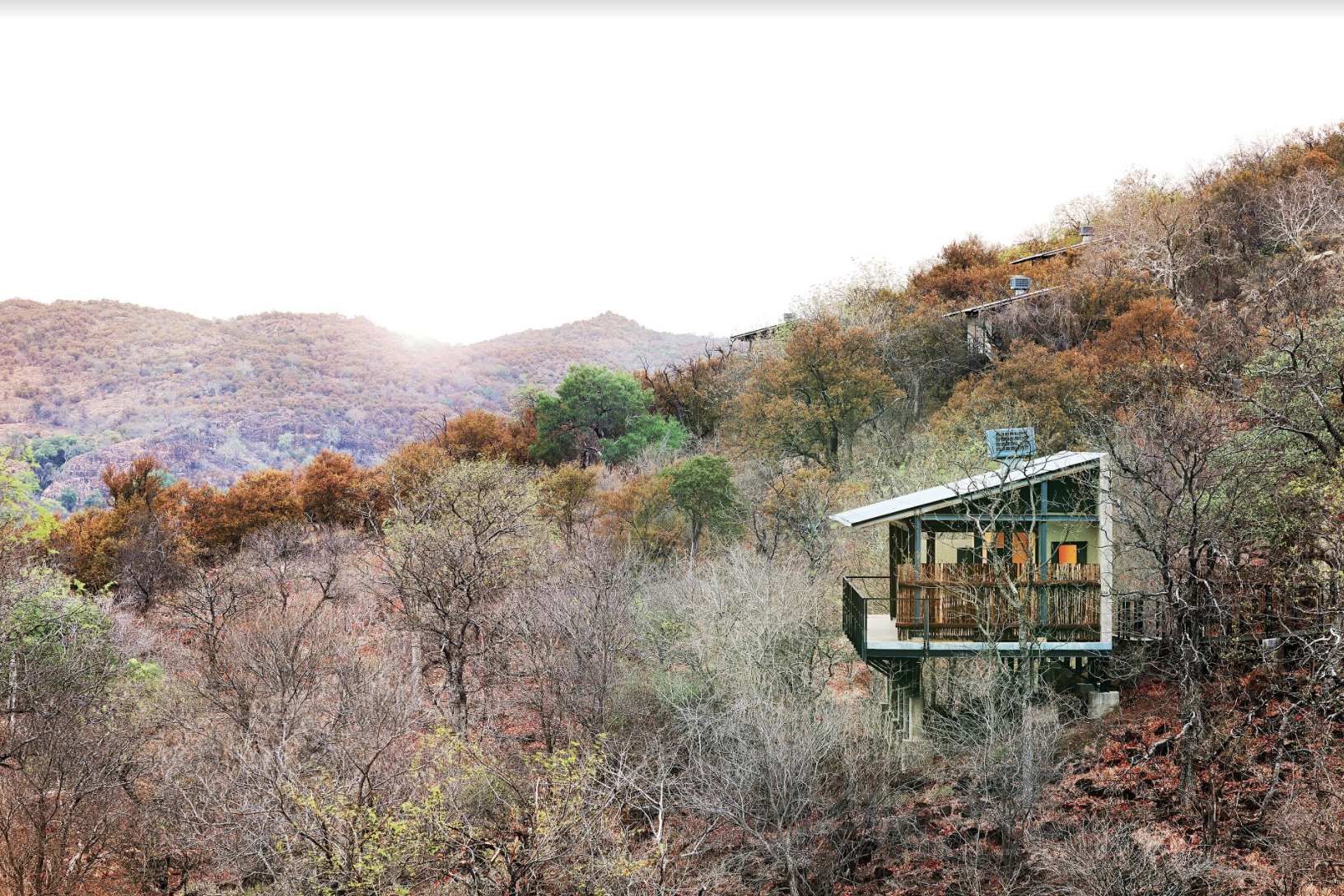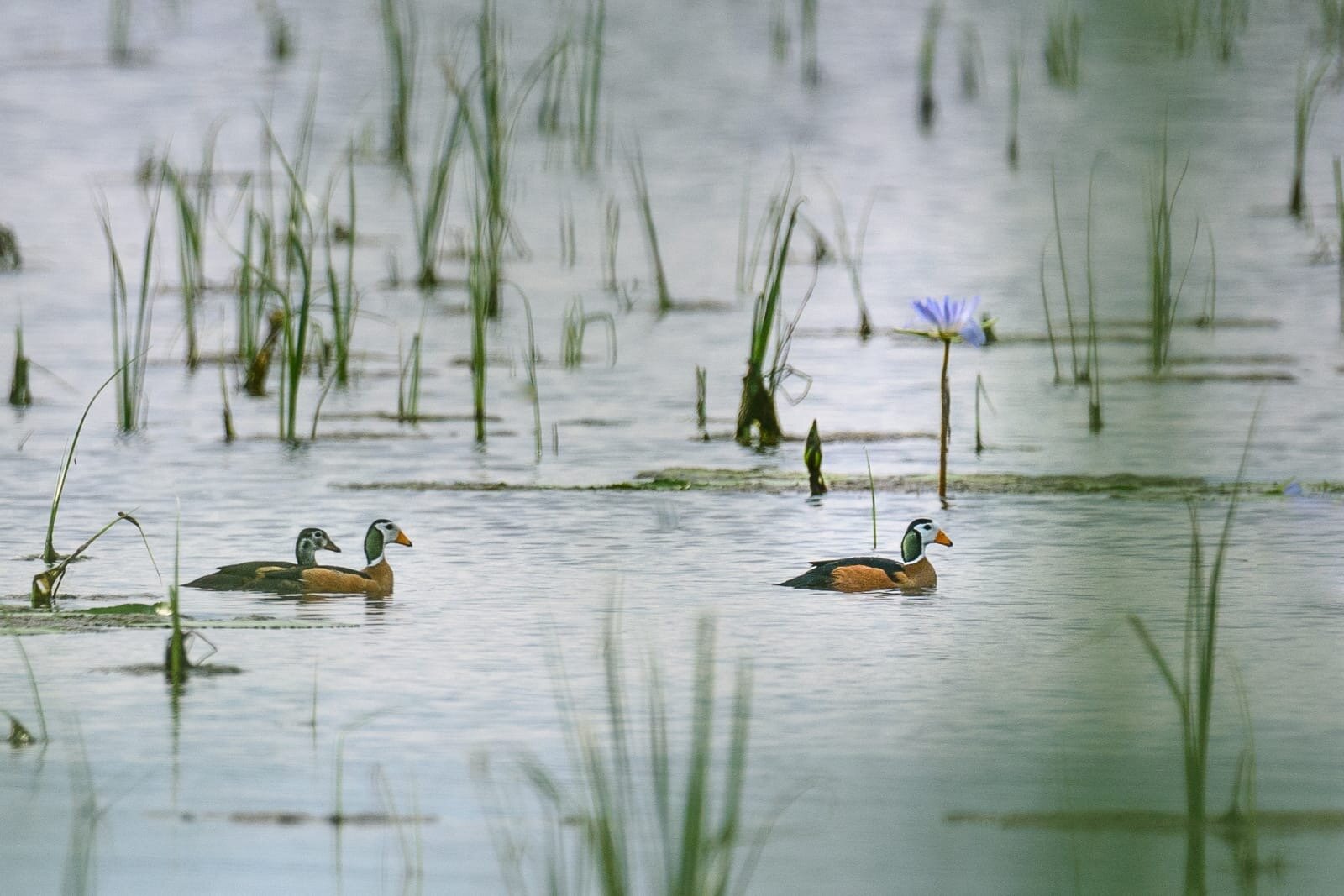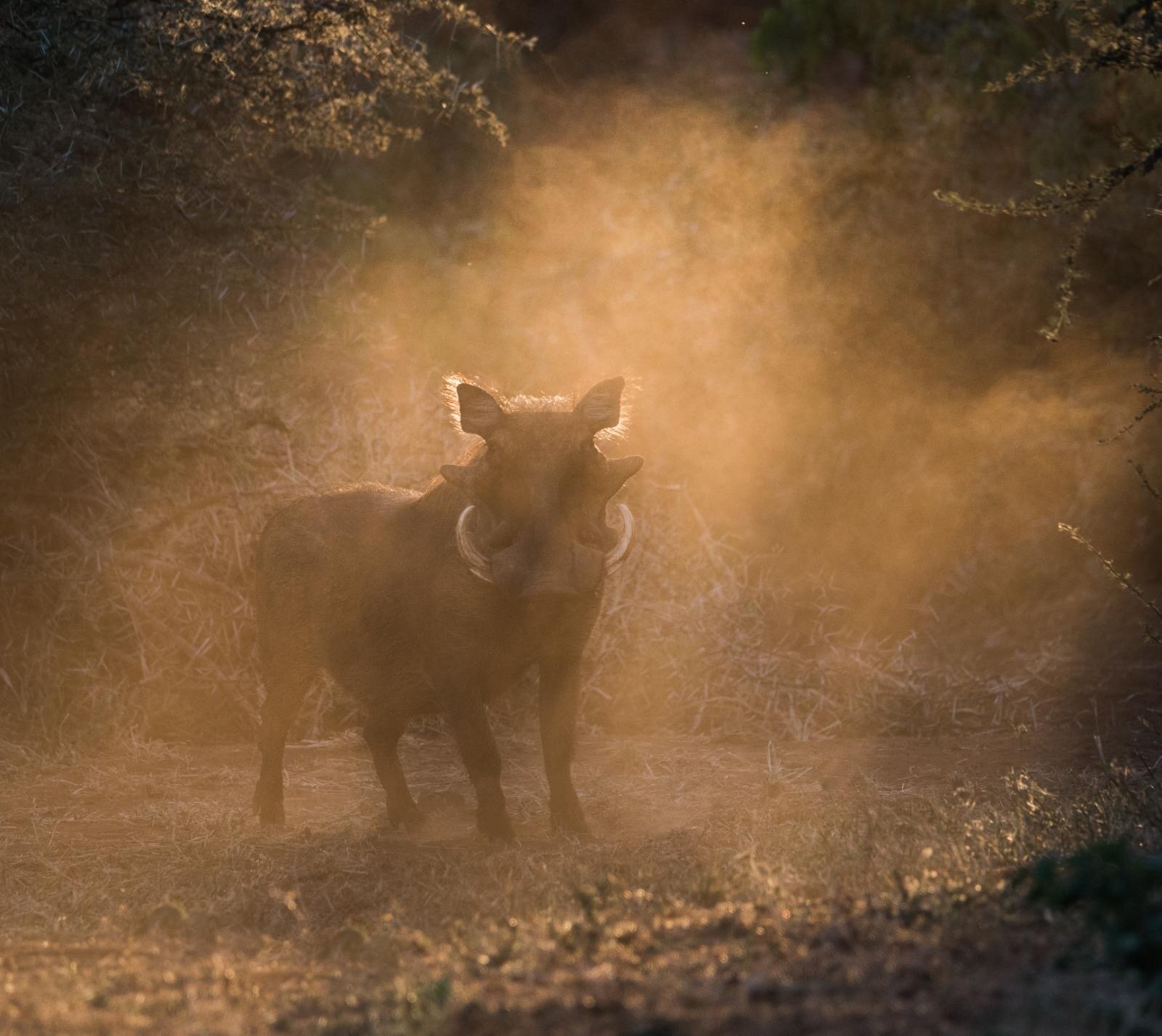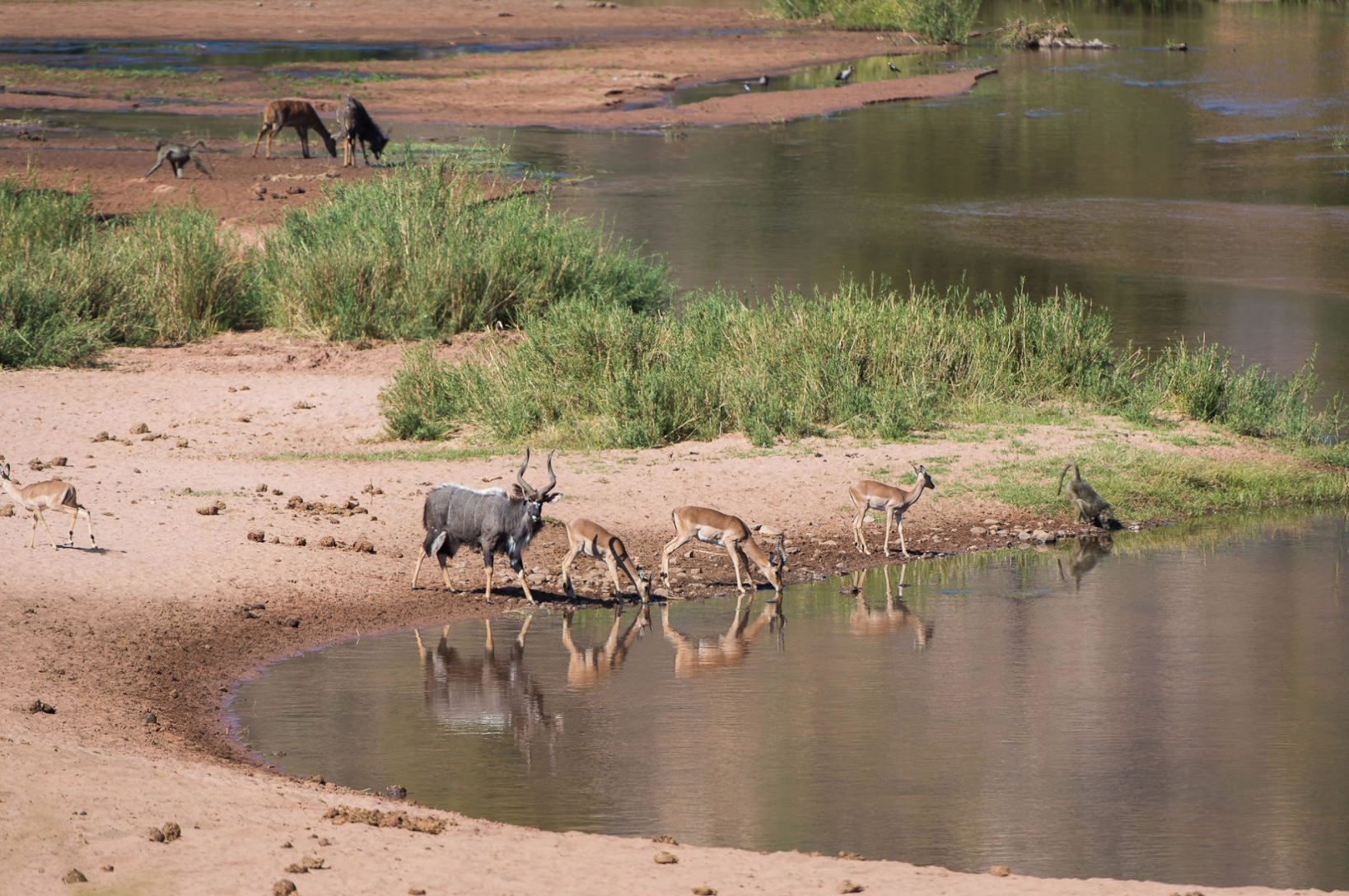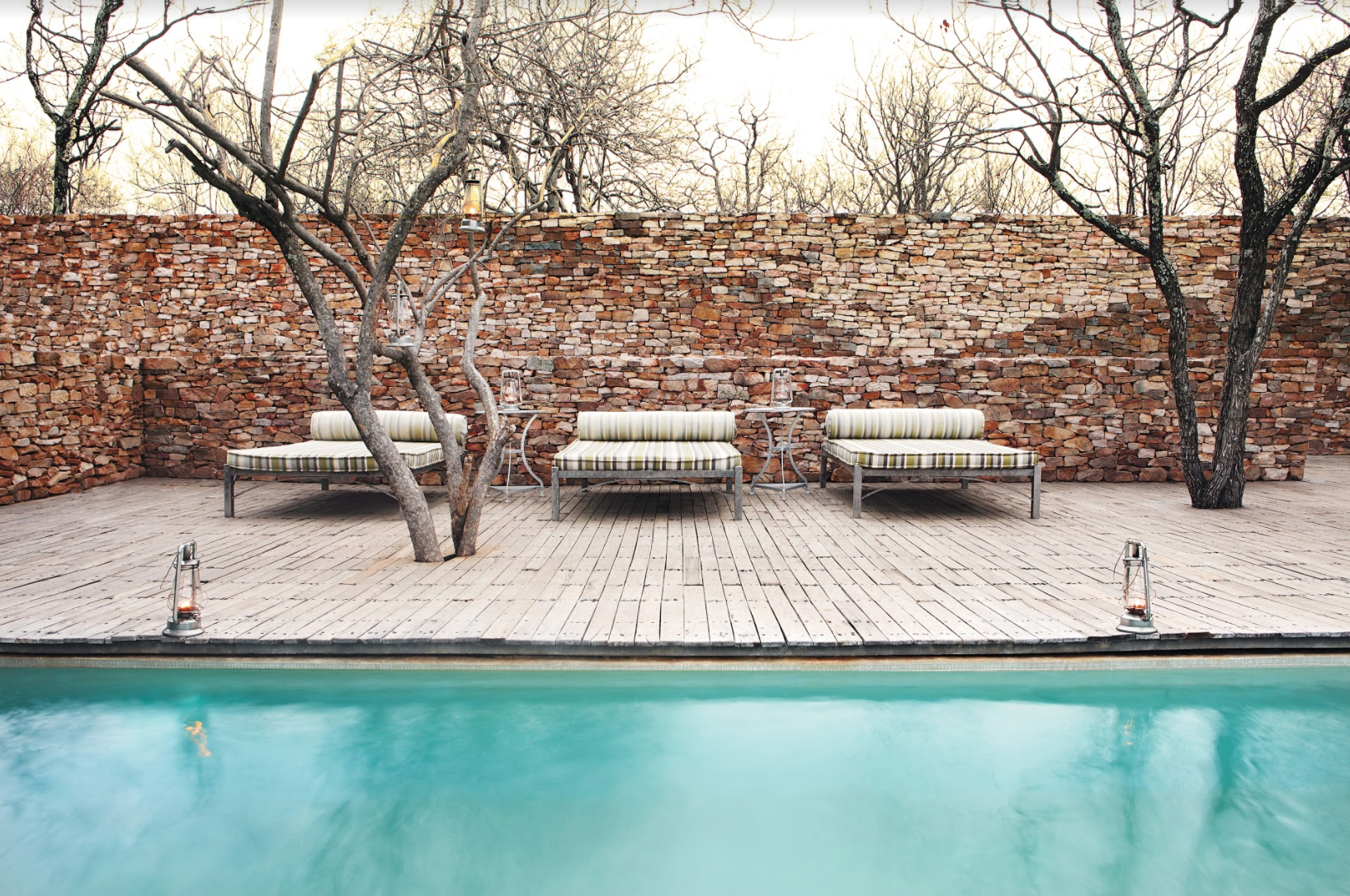You’ll find two of our beautiful lodges, The Outpost and Pel’s Post, in the far north of the Kruger National Park and winter is one of the best times of year to visit us here. The daily temperatures are mild and you can expect dry, sunny days and exceptional night skies. The temperatures at dawn and dusk may be chilly but don’t worry too much – we will make sure you are kitted out with hot water bottles, blankets and coffee to keep you toasty.
We chatted to our General Manager, Chanyn-Lee Zeelie, who has many years of field guiding experience in South Africa about what you can expect when you visit during the winter months. Make the most of our current special offer that could see you save over 60% on your stay (with exclusive-use options too)..
A RUST-COLOURED SETTING
The magnificent scenery of Northern Kruger is ever-changing and the lush summer greenery fades to a colour palette of rusty oranges and browns as the bush dries out during winter. Most of the trees in the area are deciduous, meaning they lose their leaves in the dry season to conserve water until the wet summer months return, and as the bush becomes sparser, spotting wildlife becomes easier. The mighty Baobab tree shows off its characteristic ‘upside down tree’ look during winter too as it sheds all its leaves – at golden hour the silhouettes of these giant trees dotted along the horizon makes for quite a picturesque scene!
LIFE FINDS A WAY
Winter can be a harsh time for wildlife as resources such as grass, foliage and water become scarce. The animals begin to congregate along the perennial rivers in the area, such as the Luvuvhu, a sacred resource in an otherwise parched land. These waters flow throughout the year, including in winter, and often attract herds of elephant and buffalo.
With the dry grass and barren trees, the Ana Tree is another lifeline during the winter months. This unusual tree discards its leaves in the summer months and by the time winter arrives, it produces pods and foliage that become a highly sought after food source. Baboons and elephants often knock down some of the pods whilst feeding, making them readily available for antelope species and warthogs to tuck into.
The scent of wild sage fills the air in parts of the reserve and the bright pink flowers of the Impala Lily jump out in an otherwise arid environment.
A MAGICAL OASIS
Another winter spectacle in Northern Kruger is the oasis that is Reedbuckvlei. It fills up after the summer rains and attracts countless waders and other wildlife to the area. Bird species to spot here include the African Spoonbill, African Openbill and a variety of storks. This wetland is situated on the edge of the largest fever tree forest in the Southern Hemisphere and it’s not too far from the Limpopo River. The grass bordering the vlei is lush and green in contrast to the barren landscape and offers sanctuary to mammals like baboons, zebra, impala, eland, buffalo and many more. Blue water lillies have covered the area this winter too, adding to the fairytale-like setting.
SUNSETS AND STARRY SKIES
As the day draws to a close, we are blessed with intense orange and red-hued sunsets – a prelude to what the night sky has in store. Stargazing is at its best in the winter months in the Southern Hemisphere as we gaze directly into the centre of the Milky Way and are able to see thousands of stars in the busy ‘city’ of our galaxy. We just can’t wait to share this magic with you, our guests.







